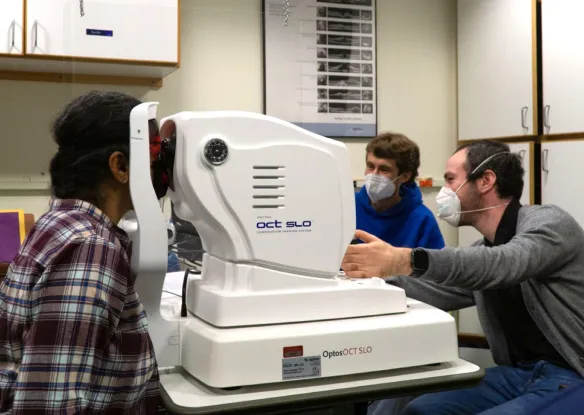Remote real-time description (RRTD) is a simple technique that will allow a describer anywhere in the world to provide real-time description for a video stream being viewed by a visually-impaired student at home, in the classroom, or on the go. In RRTD, a video feed is streamed to the describer who passes the audio (and optionally the video) to the student, along with the added live description. This ensures the synchronization of the original audio/video stream with the descriptive commentary. If the webcast or webinar is interactive, any audio and/or video from the student is then streamed directly back to the original source to allow the student to ask questions or make comments.
A number of existing technologies will be used in investigating RRTD, and initial research will involve identifying the most appropriate. The most promising approaches include voice over IP (VOIP), Internet proxy services, and of course, web-based streaming video. An existing video conferencing technology (Skype) will be used to conduct simple experiments with this approach. The IDEAL Group – a DLN Partner – will collaborate with the VDRDC to implement the technology as a simple app for an off-the-shelf smart phone.
This approach makes the experimental technology extremely inexpensive and easy to deploy to testers and potential users. As with all of the Center’s software technologies, the RRTD prototype app will be made available as free and open-source software (FOSS) at the conclusion of the project.
One of the potential strengths of RRTD is that it would only require a willing describer and reliable Internet connectivity for both parties. This technique would make it possible for a parent at home to provide free description services for a student in the classroom. It would also allow a professional describer in a remote location to provide descriptive services for one or more students with visual disabilities.


